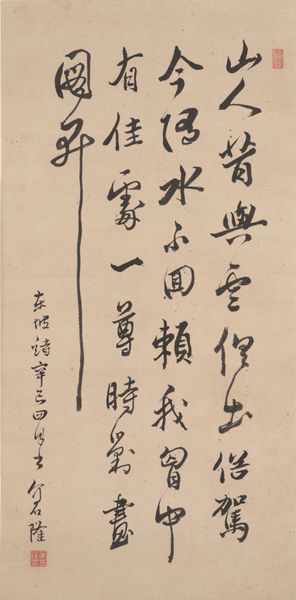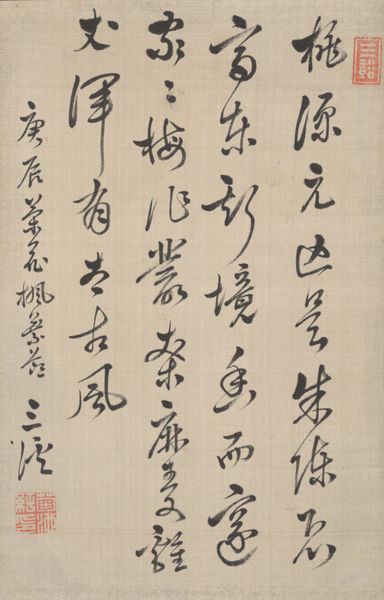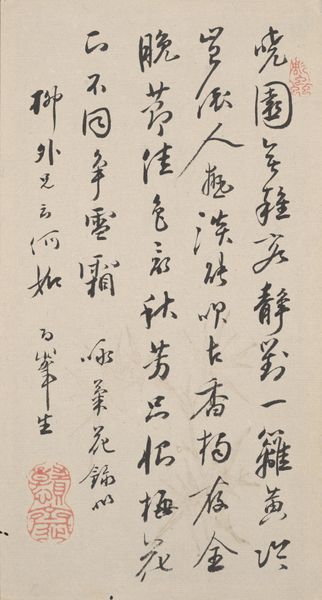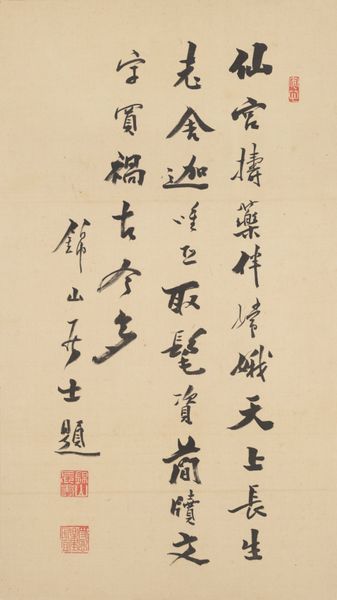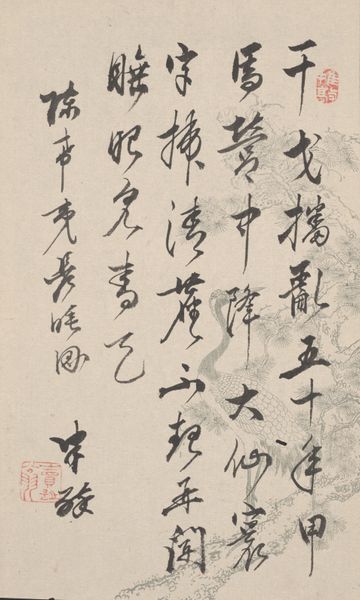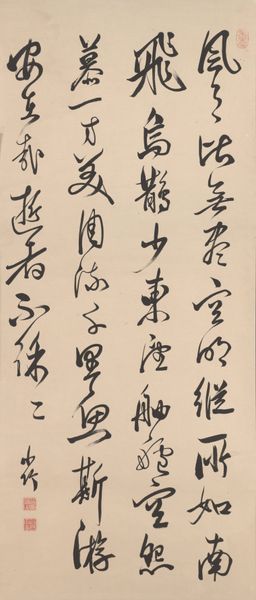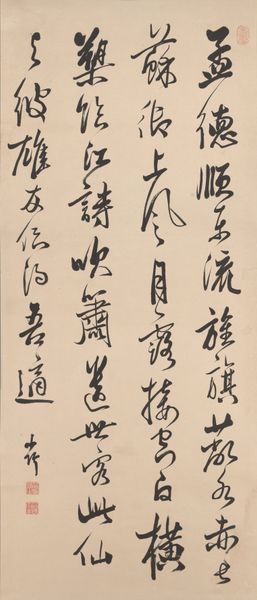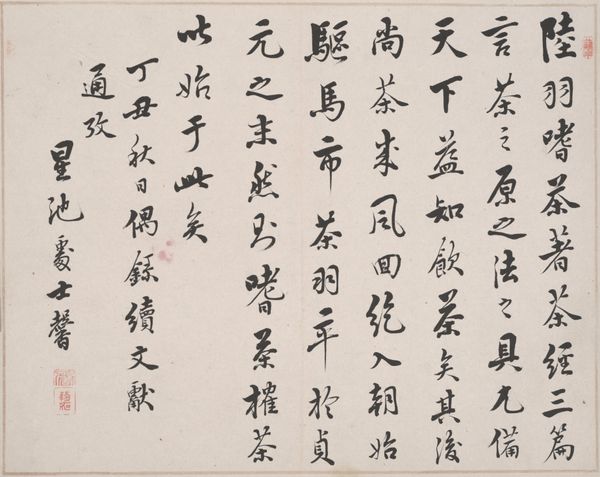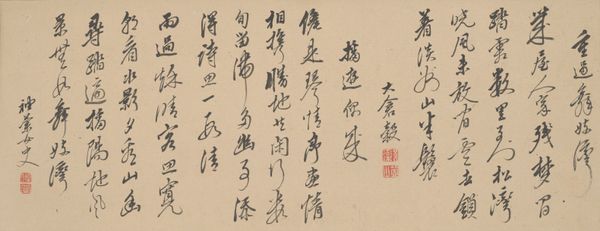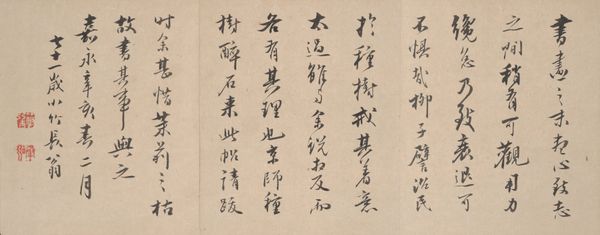
drawing, paper, ink
#
drawing
#
asian-art
#
japan
#
paper
#
ink
#
calligraphy
Dimensions: 11 1/8 × 5 5/8 in. (28.26 × 14.29 cm)
Copyright: Public Domain
Editor: So, here we have "Quatrain in Running Script" by Umetsuji Kiretsu, created around the mid-19th century using ink on paper. The flowing characters almost seem to dance across the scroll. What visual and symbolic significance do you find in this artwork? Curator: The "dancing," as you call it, is the key! This script carries profound cultural weight, not just aesthetically, but emotionally. Look at the density and the varying pressure of the brushstrokes. What might they evoke for someone familiar with the text? Editor: Maybe a sense of urgency, or… intimacy? It’s hard to read, but I get a feeling more than a clear meaning. Curator: Exactly! Calligraphy, especially in East Asian traditions, isn't just about conveying words. The act of creation is a meditative, embodied practice. The ink's gradations mirror the artist’s breath, state of mind, perhaps even societal pressures or philosophical leanings of the time. Do you notice any recurring shapes or motifs within the characters themselves? Editor: I see repeated strokes that almost look like… birds in flight? And a few that resemble mountains, maybe? Curator: Interesting! Consider that these repeating elements might allude to core concepts within the poem itself – perhaps a longing for freedom, or a reverence for nature, mirroring a deep connection to Shinto or Buddhist ideas. The placement of the seals is also vital—do they contribute to or interrupt the flow of meaning? Editor: That makes me see this less as just pretty writing and more like a visual record of a specific moment, a feeling. Curator: Precisely! It is a powerful encapsulation of intellect, emotion, and cultural memory made manifest. We might never fully decode every layer of meaning, but we can feel its enduring presence.
Comments
No comments
Be the first to comment and join the conversation on the ultimate creative platform.
